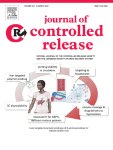|
Autores/as
Biosca, Arnau; Cabanach, Pol ; Abdulkarim, Muthanna; Gumbleton, Mark; Gómez-Canela, Cristian ; Abdulkarim, Muthanna; Gumbleton, Mark; Gómez-Canela, Cristian ; Ramírez, Miriam; Bouzón-Arnáiz, Inés; Avalos-Padilla, Yunuen; Borrós, Salvador ; Ramírez, Miriam; Bouzón-Arnáiz, Inés; Avalos-Padilla, Yunuen; Borrós, Salvador ; Fernàndez-Busquets, Xavier ; Fernàndez-Busquets, Xavier
|
Abstract
The current decline in antimalarial drug efficacy due to the evolution of resistant Plasmodium strains calls for new strategies capable of improving the bioavailability of antimalarials, especially of those whose lipophilic character imparts them a low solubility in biological fluids. Here we have designed, synthesized and characterized amphiphilic zwitterionic block copolymers forming nanoparticles capable of penetrating the intestinal epithelium that can be used for oral administration. Poly(butyl methacrylate-co-morpholinoethyl sulfobetaine methacrylate) (PBMA-MESBMA)-based nanoparticles exhibited a specific targeting to Plasmodium falciparum-infected vs. parasite-free red blood cells (74.8%/0.8% respectively), which was maintained upon encapsulation of the lipophilic antimalarial drug curcumin (82.6%/0.3%). The in vitro efficacy of curcumin upon encapsulation was maintained relative to the free compound, with an IC50 around 5 μM. In vivo assays indicated a significantly increased curcumin concentration in the blood of mice one hour after being orally fed PBMA-MESBMA-curcumin in comparison to the administration of free drug (18.7 vs. 2.1 ng/ml, respectively). At longer times, however, plasma curcumin concentration equaled between free and encapsulated drug, which was reflected in similar in vivo antimalarial activities in Plasmodium yoelii yoelii-infected mice. Microscopic analysis in blood samples of fluorescently labeled PBMA-MESBMA revealed the presence of the polymer inside P. yoelii yoelii-parasitized erythrocytes one hour after oral administration to infected animals.
|

WoS
Scopus
Altmetrics
  
|
